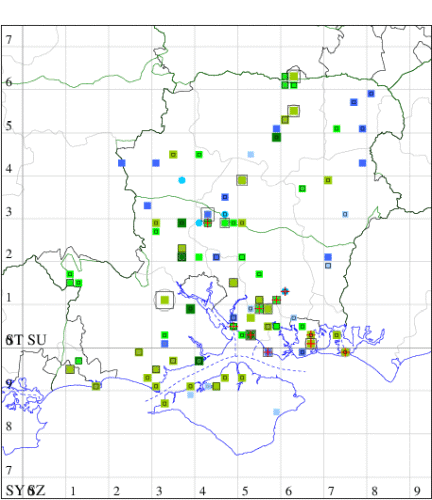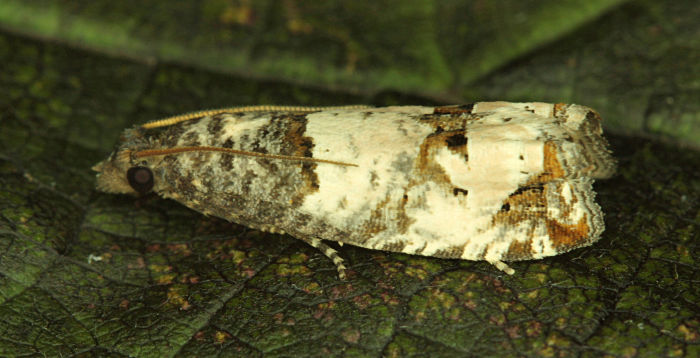Notocelia roborana
Checklist Number49.295 [B&F: 1178]
Verification
Record will normally be accepted but photo evidence may be required - check with CMR if not sure of identity
Classification
| Family: | Tortricidae |
| Subfamily: | Olethreutinae |
| Genus: | Notocelia |
| Species: | roborana |
| Authority: | ([Denis & Schiffermüller], 1775) |
Common in gardens and hedgerows throughout much of the British Isles. In Hampshire widespread and fairly common. There have been no recent records from the Isle of Wight. Wingspan 16-22 mm. This is one of three closely related and difficult to separate species (see E. trimaculana and E. rosaecolana). Differs from E. rosaecolana by the heavier basal patch which is darker and has the outer edge sharply defined and parallel with the termen [Bradley]. Larva feeds on Wild Rose and Cultivated Rose, living within a spun or rolled leaf, over-wintering as an egg.


The abundance in each month is indicated as follows:
 No records
No records Very occasional
Very occasional Irregular
Irregular Uncommon
Uncommon Off-peak, but not unusual
Off-peak, but not unusual Off-peak, but not unusual
Off-peak, but not unusual Main flight time
Main flight time| J | F | M | A | M | J | J | A | S | O | N | D | |
|---|---|---|---|---|---|---|---|---|---|---|---|---|
| Adult |  |  |  |  |  |  |  |  |  |  |  |  |
| Larval |  |  |  |  |  |  |  |  |  |  |  |  |



.jpg)

